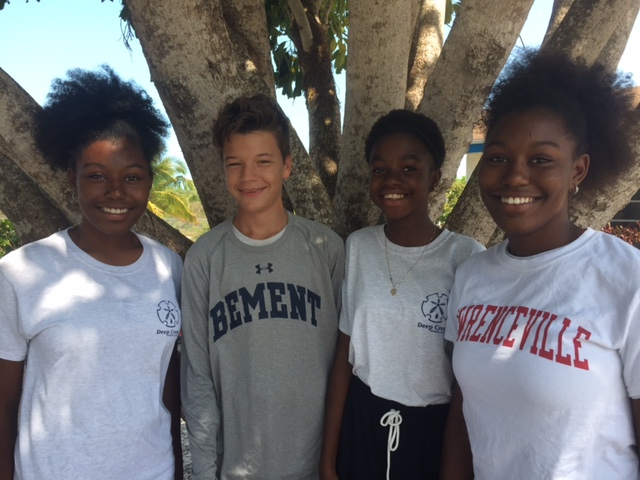After the recent addition of a newly established Acropora cervicornis (staghorn coral) nursery, the Cape Eleuthera Institute (CEI) Reef Ecology and Conservation Team has embarked on yet another coral propagation project. Jodie Ball, Research Technician, is leading the initiative as part of her independent project in conjunction with the Center for Sustainable Development, one of Cape Eleuthera Island School’s affiliate organizations. Their goal is to set up a shallow water coral nursery for the propagation of elkhorn coral (Acropora palmata), also a critically endangered species, that can be used for educational purposes as well as contribute to reef restoration science.
There are various acknowledged approaches to coral gardening but CEI has so far only employed one of these innovative techniques, in the form of 2 PVC-trees at both our Tunnel Rock and Bamboo Point dive sites. However, in just a few weeks, Jodie, her team, and members of CSD expanded these efforts, with the creation of two new structures, installed at a shallow water reef just off the south west coast of Cape Eleuthera. This new nursery is cultivating elkhorn coral, which thrives in much shallower water than staghorn coral. Consequently, these new structures were deployed at a shallower depth, between 10-15 feet, and easily accessed from shore.
Photo 1: The new nursery structures wait on the deck, ready to be deployed.
The two new structures were built using different materials all of which were repurposed materials previously considered to be waste. One of the main goals of our campus is to strive to be a zero waste campus, so the team was quick to jump at the opportunity to repurpose old materials rather than spend a large amount of money on pre-constructed designs. One of the structures is built from rebar and painted with blue anti-corrosive paint (Photo 2), and the other using cinder blocks and cement pucks, with six pucks attached to each of the cinder blocks using a devised cement and bolt method, shown below in Photo 3. After the structures were deployed and secured in their new home, the next phase of the project was to collect wild coral fragments to be grown in the nursery. On the Atlantic side of Eleuthera, scattered colonies of live elkhorn coral can be found in the mostly dead fringing reef that once thrived with many species of coral and sea fans. The team collected a small branch of elkhorn coral from a wild colony which was then broken down into 28 pieces. Once added to the nursery, the new corals were photographed and measured and added to CEI’s compilation of coral data.
Photo 2: Elkhorn coral fragments hang from the rebar structure at the new shallow water nursery site.
Photo 3: Elkhorn coral fragments attached to cement pucks using epoxy.
The team hopes that the new project will provide an opportunity for the many visitors to the Cape Eleuthera Island School to learn about the global decline of coral reefs and how we can aid in their restoration, using a simple design created from repurposed materials that would otherwise have been considered waste. CSD is very excited about the collaboration with CEI and hopes to continue to partner on projects in joint efforts in marine conservation.
* All photos courtesy of Daisy Buzzoni
